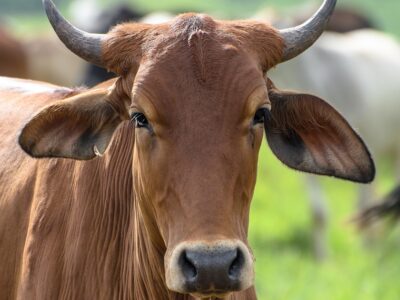Below you can find a complete list of Pakistani animals. We currently track 275 animals in Pakistan and are adding more every day!
Located on the Indian subcontinent, Pakistan is a Muslim-majority state that formed from the partition of British India in 1947. The country shares a land border with Iran and Afghanistan to the west, China to the northeast, and India to the east. Pakistan is a country of extremes, both in terms of geography and wildlife. The north and west of Pakistan are dominated by the mountains of the Himalayas, the Karakoram, and the Hindu Kush. The southwest contains the Balochistan Plateau, while the southeast encompasses the Indus River plain. It is also bordered to the south by the coastline of the Arabian Sea.
The Official National (State) Animal of Pakistan

Markhor is the national animal of Pakistan.
©BearFotos/Shutterstock.com
The markhor, a large species of wild goat with screw-shaped horns that can grow up to five feet in length, is considered to be the national animal of Pakistan. With an impressive spiraling shape, these horns are used for defense against predators and other male markhors. Markhors inhabit mountainous regions and feed on grasses, leaves, and bark from bushes. They live in small family groups consisting of four or five individuals. The males lead the group while the females take care of their young.
The chukar is a member of the partridge family and serves as a local symbol of love in Pakistan. These birds have reddish-brown plumage across their body with white markings along their wings and tail feathers that resemble spots or bars. They also possess a distinctive black collar around their neck which contrasts nicely with their overall coloring. Chukars prefer rocky terrain where they can hide from predators. Their habitat includes mountainsides, cliffs, gorges, and even dry riverbeds where vegetation is sparsely distributed. They mostly eat seeds but will occasionally consume insects as well as berries when available during certain times of the year.
Where to Find the Top Wild Animals in Pakistan

Although the snow leopard is considered an endangered species globally, this big cat still thrives in some parts of northern Pakistan, like Kashmir and Swat Valley, where there are plenty of rocky mountains for them to hide from predators.
©Vladimir Turkenich/Shutterstock.com
Pakistan is home to a wide variety of animals, including the endangered snow leopard, which can be found in the northern regions. Additionally, wild goats and ibex roam the mountains of Pakistan, while Bengal tigers inhabit areas of the south such as Chitral and Hazara. For bird watchers, there are over 600 species of birds that make their homes in Pakistan’s diverse habitats. Keen observers may spot vultures soaring above or kingfishers diving for fish near rivers and lakes.
For those looking to observe marine life off the coast of Pakistan, dolphins can often be seen playing offshore from Karachi and Gwadar. The Indus River Dolphin is an especially interesting sight. It has adapted to living exclusively in freshwater river systems like those found throughout Pakistan. Visitors should also look out for migratory whales during winter months when they visit Pakistani waters to feed on schools of krill close to shorelines before heading back north again come springtime.
If you aren’t up for a wilderness trek, Pakistan has set aside some 35 protected areas where visitors can find the greatest diversity of natural fauna.
- The Margalla Hills National Park encompasses more than 40,000 acres of land near the foothills of the Himalayas. Easy to reach because of its close proximity to the capital, Islamabad, this park is a great spot for bird lovers to find hawks, eagles, falcons, vultures, larks, doves, and much more. It also contains barking deer, red foxes, and leopards.
- The Hingol National Park, stretching about 2,400 square miles across the southwestern province of Baluchistan, is among the largest protected areas in the country. Known for its stunning natural rock formations, including the Princess of Hope, the Baluchistan Sphinx, and the mud volcanoes, the park is home to exotic wild cats, pangolins, wolves, jackals, hyenas, crocodiles, vultures, pelicans, eagles, and many more mammals and birds.
- The Chitral National Park encompasses nearly 20,000 acres of pristine mountain valleys in the northern Hindu Kush. Visitors might catch a glimpse of a leopard, lynxes, ibexes, and even the elusive markhor. It is best experienced from May to September.
- Kirthar National Park encompasses the rough, hilly terrain and stone valleys of the southern Jamshoro District of Sindh. It is home to leopards, wolves, caracals, badgers, hyenas, mongooses, ibexes, snakes, and various birds like eagles and kestrels.
The Most Dangerous Animals in Pakistan Today
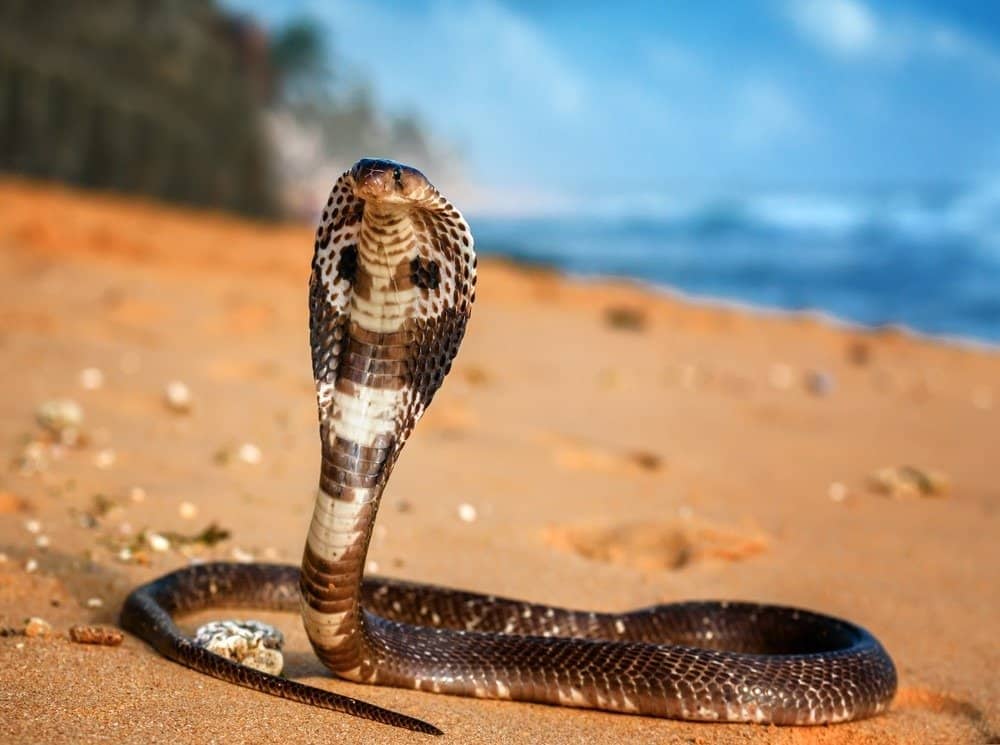
Indian cobras are one of the most dangerous animals in Pakistan.
©Vova Shevchuk/Shutterstock.com
Pakistan is home to some dangerous animals. One of the most feared predators in Pakistan is the leopard, which can be found in forests, scrublands, and other areas with dense vegetation. The leopard’s danger comes from its stealthy hunting habits. It is an ambush predator that relies on stealth and surprise to capture its prey. Lucky for us, leopard attacks against humans are exceedingly rare.
The wolf is another animal native to Pakistan that poses a threat to humans. Wolves are highly territorial creatures who will attack anything that invades their space or threatens their pack mates – this includes people! They live throughout much of the country, but especially in alpine meadows and mountainous regions where there may be fewer human settlements nearby.
Finally, snakes pose a serious threat as well due to their venomous bite. Cobras, vipers, kraits, and saw-scaled vipers are all found in Pakistan’s wilderness areas, including forests and grasslands. Fortunately, most snakes avoid humans, so you should always take precautions when entering snake habitats, such as wearing thick boots or checking your clothes for any unwelcome passengers!
Pakistan is home to several venomous snakes that pose a danger to people. Visitors should be particularly wary of the big four snakes. These are responsible for more bites than any other snakes in the region.
- Indian Cobra – Easily identified by the two unique false eyes on the back of its hood, the Indian cobra has become famous around the world for its use in snake charming. The venom itself is deadly only if it’s left untreated.
- Russell’s Viper – Native to the border region with India, this viper has a deep yellow or tan body covered with dark brown spots. It will sometimes strike without provocation and deliver a potentially fatal amount of venom if left untreated. Extensive tissue damage is also quite common.
- Indian Saw-Scaled Viper – This species might be responsible for the most deaths in the country because of its frequent occurrence, its excitable nature, and its highly toxic venom. Two distinct subspecies can be found in Pakistan, one only endemic to Astola Island, the other common across much of the mainland.
- Common Krait – This species is identified by the black or bluish color and the white bands. The powerful neurotoxin they produce can induce muscle paralysis and abdominal cramps. The cause of death is usually respiratory failure.
- Deathstalker – This exotic yellow-colored scorpion lives up to its name. One or two doses of its dangerous venom can potentially kill a person. The old, young, and sick are most vulnerable.
Rarest Animals in Pakistan
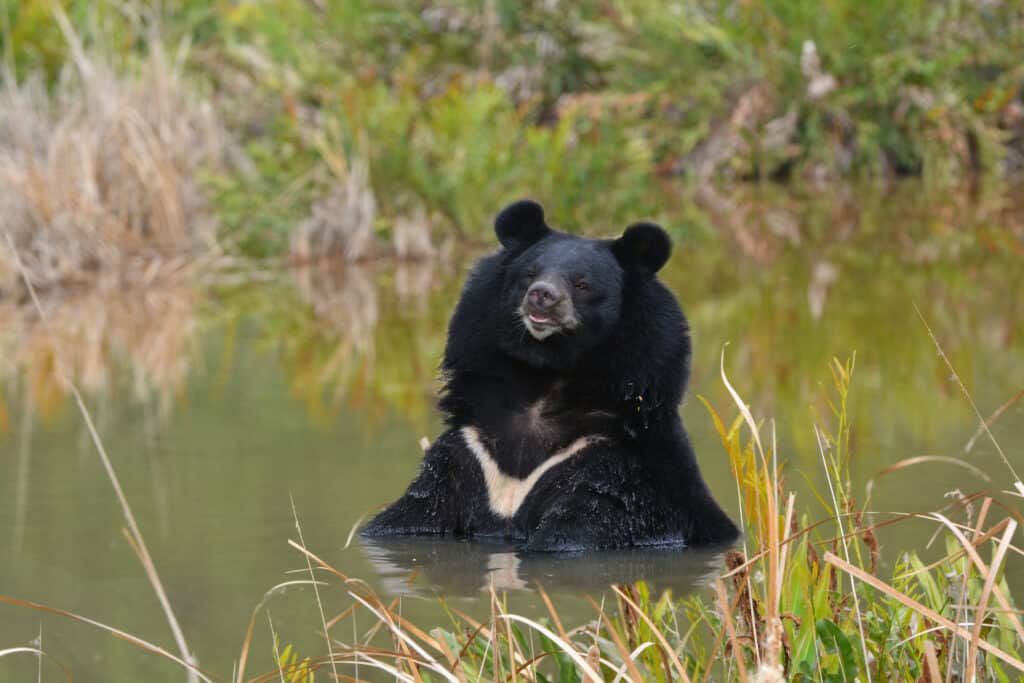
The Asian Black Bear is a rare site in Pakistan because it is critically endangered. There are less than 1,000 left in the wild.
©Kasikun_Kamol/Shutterstock.com
Pakistan is home to some of the rarest animals in the world, many of which are not endangered species. One such animal is the wild goat known as Markhor, which can be found in Gilgit-Baltistan and Chitral districts. It is one of the most sought-after trophy species by foreign hunters due to its majestic horns that spiral up to five feet high! The Himalayan Tahr can also be seen in certain parts of Pakistan, particularly in the Abbottabad district. This mountain goat has a thick brown coat with white patches around their neck and legs and can weigh up to 175 pounds!
Another interesting creature native to Pakistan is the snow leopard. Although it’s considered an endangered species globally, this big cat still thrives in some parts of northern Pakistan, like Kashmir and Swat Valley, where there are plenty of rocky mountains for them to hide from predators. They have an incredibly thick fur coat that helps them stay warm during cold weather, and they feed on smaller mammals like marmots or hares when food gets scarce during winter months.
The last wildlife gem worth mentioning here is the Asian black bear, which lives mainly within dense forests across Pakistan but rarely comes out into open areas due to human activity. As its name suggests, these bears have shiny black fur coats with a distinctive pale V-shaped marking on their chests and weigh about 330 pounds when fully grown! They mostly feed on fruits, nuts, insects, or honeycombs, depending on what’s available.
Largest Animals in Pakistan

The Indus River Dolphin is one of the largest animals in Pakistan, reaching up to eight feet long!
©iStock.com/SValeriia
The Asiatic Black Bear is one of the world’s most endangered species and can reach up to 6ft tall when standing on two legs. These animals inhabit a variety of habitats, such as forests, rivers, grasslands, and mountains. The black bear has an omnivorous diet which includes fruits, nuts, insects, small rodents, and even fish, if available. They are solitary animals that prefer to remain hidden from predators by staying in dens during the day or foraging during twilight hours.
The Indus River Dolphin is another endangered species found in Pakistan that can grow up to 8ft long and weigh as much as 200 pounds. This species lives exclusively in freshwater areas along the Indus river system, where they feed mainly on small fishes like carp or catfish with their sensitive sonar-like capabilities, which enables them to detect prey through echolocation even in murky waters. Due to their slow reproduction rates, these dolphins are threatened by habitat loss due to agricultural activities and pollution caused by industrial runoff into their natural environment.
Lastly, the Markhor is a wild goat native to Pakistan known for its distinctive corkscrew-like horns, which can be over 4 feet long! These goats live mainly at elevations between 7,200-13,000 feet above sea level within scrubby savanna woodlands. They have also been observed inhabiting alpine meadows near snowline levels throughout northern Pakistan regions, including Kashmir, Chitral, and Baltistan districts. These mountain-dwelling creatures tend toward a vegetarian diet.
Endangered Animals in Pakistan
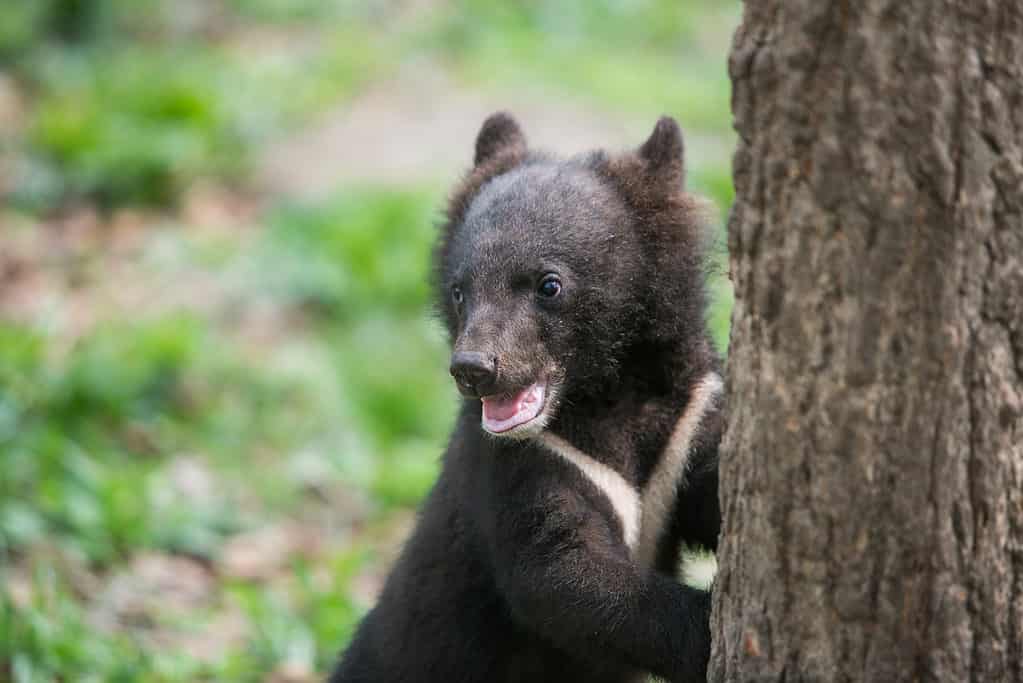
Himalayan bears are nearly extinct in Pakistan.
©Alexander Khitrov/Shutterstock.com
Animals in Pakistan are becoming endangered for a variety of reasons, including habitat destruction, poaching, and climate change. According to the Food and Agriculture Organization (FAO), approximately 78% of the water resources in Pakistan are used for irrigation purposes. This includes irrigating hay and agricultural grasses as well as crops such as wheat, rice, maize, and vegetables.
As the demand for livestock food production increases, so too does the need to draw more water from rivers and other sources, which has led to a decrease in available freshwater habitats that many species depend on. Deforestation also leads to the loss of wildlife habitats, which further contributes to endangered animal populations in Pakistan.
Human activity has put some of Pakistan’s unique fauna in danger. Several species, like the Pakistan sand cat, the snow leopard, and the markhor, are in decline across the region but not yet at risk. The following species of wildlife are currently classified as endangered by the IUCN Red List.
- Kashmir Gray Langur – This exotic Old World arboreal monkey is largely confined to the Kashmir region of India and the Machiara National Park in Pakistan.
- Woolly Flying Squirrel – This elusive species is among the largest squirrels in the world. Not much is known about it since sightings are rare.
- Indian Pangolin – These armored mammals inhabit the dry and hilly lands of India and southeastern Pakistan. It is currently endangered because of poaching for its meat and scales.
- South Asian River Dolphin – This unique subspecies of the river dolphin is only found in the Indus River. Populations have declined rapidly from the combined impact of hunting, pollution, accidental entanglement in fishnets, and other alterations to its natural river habitat. With only about 1,500 remaining, this particular subspecies is in danger of becoming extinct.
- Himalayan Brown Bear – This subspecies of the brown bear is also in danger of becoming extinct. They are sometimes killed for their fur or to protect livestock. They are also at the mercy of habitat destruction.
- Kashmir Musk Deer –The musk deer has long saber-like teeth emerging from its mouth. It’s now in danger of becoming extinct from habitat loss and hunting.
The Flag of Pakistan

The flag of Pakistan is rich in symbolism.
©iStock.com/shaadjutt
The flag of Pakistan is a representation of the country’s national identity. It consists of a green field with a white crescent moon and a five-pointed star in the middle, as well as a vertical white stripe located at the hoist end.
The symbolism reflects the predominantly Muslim population in Pakistan, with green being one of Islam’s most prominent colors. The crescent moon and star are also traditional symbols associated with Islamic flags, having been adopted by many nations since the Ottoman Empire and signifying peace between Muslims and non-Muslims alike.
Additionally, it is believed that the white represents minority religions living within Pakistan, such as Christians and Hindus – signifying religious equality among its citizens regardless of creed or ethnicity. Ultimately, this combination creates an eye-catching display to proudly represent Pakistan on any occasion through its vibrant hues that define its cultural history.
National Flower of Pakistan
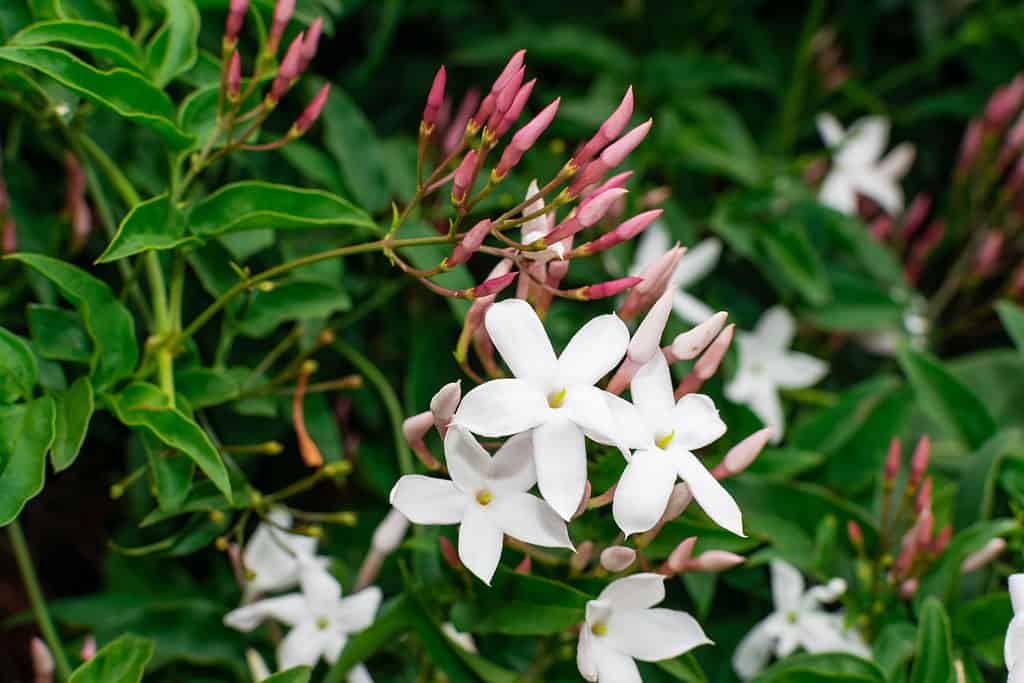
Jasmine flowers blooming is a common sight in Pakistan. It is no wonder they choose this as their national flower.
©Martin Leber/Shutterstock.com
The national flower of Pakistan is jasmine, a beautiful and highly scented flower common across the country. Jasmine is called Chambeli in Pakistan and officially became the national flower in 1991, representing the country’s values of friendliness, connection, and humility. Jasmine is considered a night flower because it releases its fragrance at night when the temperature drops.
Pakistan is home to a wide variety of wildflowers, including poppies, daisies, lilies, and irises. Other popular wildflower species found in Pakistan include chamomile, heliotrope, marigolds, and violets. Many beautiful varieties of roses also grow natively in this region. Wildflowers are an important part of the local ecology and provide food for pollinators as well as adding vibrant splashes of color to landscapes all year round!
Pakistani Animals

Admiral Butterfly
Stunningly beautiful wings
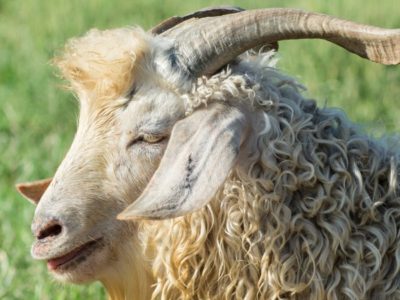
Angora Goat
Each adult Angora goat produces about 12 inches of mohair annually while kids have about 8 inches.

Ant
First evolved 100 million years ago!

Antelope
Renew their horns every year!

Armyworm
They are so named because they "march" in armies of worms from one crop to another in search of food
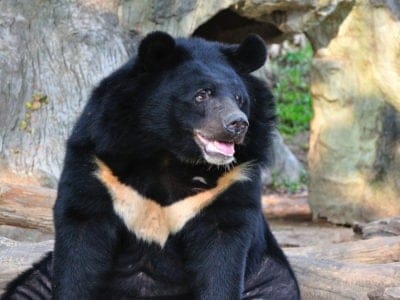
Asiatic Black Bear
Known to eat 160 different tree-borne fruits in Thailand!

Aurochs
Extinct ancestor of all domesticated cattle!

Avocet
Has a curved, upturned beak!

Banana Spider
People spin clothing and fishing nets out of these spiders’ silk.

Barb
There are over 1768 known species!

Barn Owl
Found everywhere around the world!

Barn Swallow
Older offspring help care for new hatchlings.

Bat
Detects prey using echolocation!

Bear
There are 8 different species!

Bed Bugs
Bed bugs feed for 4-12 minutes.

Bee
Rock paintings of bees date back 15,000 years

Beetle
There are more than 350,000 different species

Beewolf wasp
They hunt bees

Bird
Not all birds are able to fly!

Biscuit Beetle
The biscuit beetle form a symbiotic relationship with yeast

Black Widow Spider
They typically prey on insects!
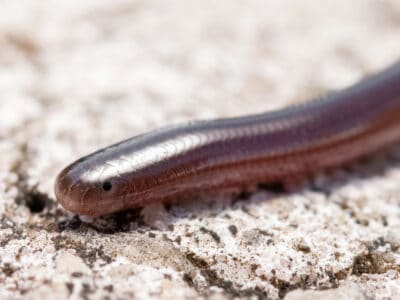
Brahminy Blindsnake
These snakes have been introduced to all continents, except Antarctica!

Brazilian Treehopper
“Mild-Mannered Minimonsters”
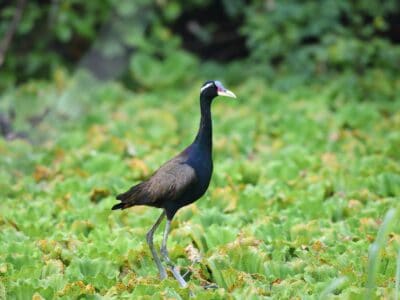
Bronze-winged Jacana
Fathers pick up their young and carry them under their wings

Brown Dog Tick
Can live its entire life indoors

Bumblebee
The most common species of bee!

Butterfly
There are thought to be up 17,500 species!

Caecilian
Some species' babies use their hooked or scraper-like teeth to peel off and eat their mother's skin
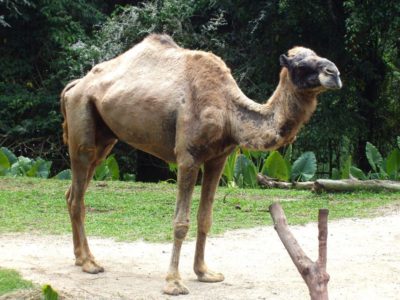
Camel
Can survive without water for 10 months!

Camel Cricket
The camel crickets that are found in the USA are light brown in color. They also have dark streaks all over their body.

Caracal
Has 20 different muscles in it's ears!

Carpenter Ant
Carpenter ants can lift up to seven times their own weight with their teeth!
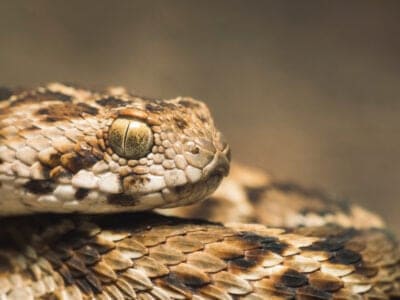
Carpet Viper
The Carpet Viper probably bites and kills more people than any other species of snake.
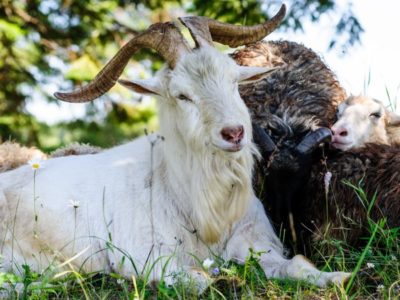
Cashmere Goat
Cashmere goat are named after Kashmir regions of India and Pakistan

Cat
May have been domesticated up to 10,000 years ago.

Caterpillar
The larvae of a moth or butterfly!

Catfish
There are nearly 3,000 different species!

Centipede
There are about 3,000 documented species!
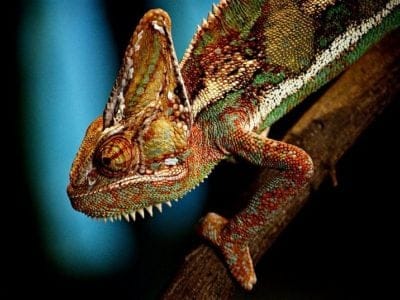
Chameleon
There are more than 160 different species!

Chicken
First domesticated more than 10,000 years ago!
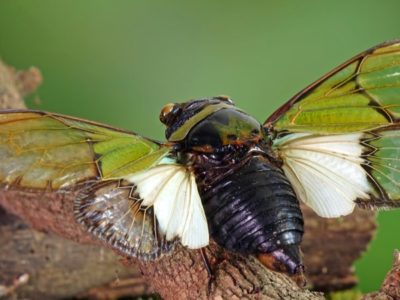
Cicada
Cicadas have one of the longest insect lifespans
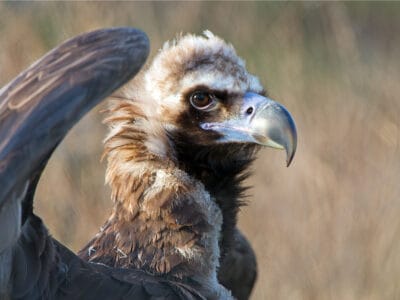
Cinereous Vulture
This vulture can fly at great heights. At least one was found a few thousand feet from the top of Mount Everest.

Cockroach
Dated to be around 300 million years old!

Codling Moth
Pupae are able to undergo diapause to survive poor fruit yield years and winter.

Common Buzzard
The most common raptor in the UK!

Common Furniture Beetle
The common furniture beetle feeds exclusively on wood

Common House Spider
House spiders have the ability to eat most insects in a home.

Common Raven
A group of ravens is called an unkindness or a conspiracy.

Cormorant
They can fly 35 mph and dive 150 feet below water.
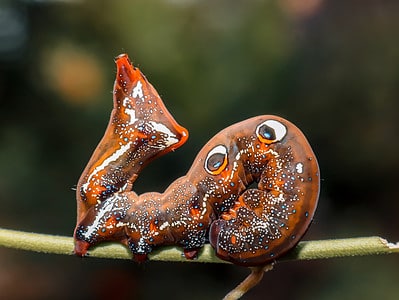
Cosmic Caterpillar
Cosmic caterpillars have spots on their back that look like eyes to scare off predators.

Cow
There are nearly 1.5 billion worldwide!

Crab
There are 93 different crab groups

Crab Spider
Crab Spiders can mimic ants or bird droppings

Crane
Many are critically endangered species!

Cricket
Male crickets can produce sounds by rubbing their wings together

Crocodile
Have changed little in 200 million years!

Crocodylomorph
Crocodylomorphs include extinct ancient species as well as 26 living species today.

Crow
A group of these birds is called a Murder.

Deer
There are around 40 different species!
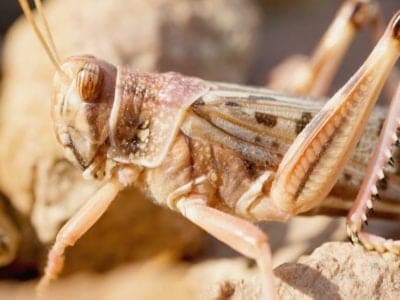
Desert Locust
Solitary locusts are grey while gregarious locusts are yellow with stripes.

Dog
First domesticated in South-East Asia!

Dog Tick
Dog ticks feed on dogs and other mammals

Donkey
First domesticated 5,000 years ago!

Dragonfly
It's larvae are carnivorous!

Duck
Rows of tiny plates line their teeth!

Dung Beetle
The dung beetle can push objects many times its own weight

Dwarf Gourami
Dwarf gourami can live for over four years with proper care.

Eagle
Has exceptional eyesight!

Earthworm
They are hermaphrodites, which means they have male and female organs

Earwig
There are nearly 2,000 different species!

Eel
Eels can be a mere few inches long to 13 feet!
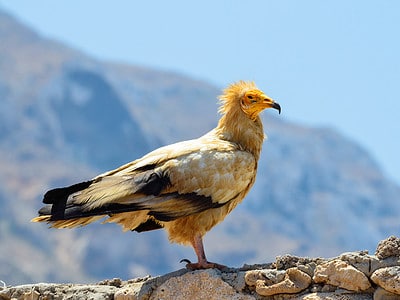
Egyptian Vulture
They steal large ostrich eggs and use rocks and pebbles to crack the shells.

Elephant
Spends around 22 hours a day eating!

Eurasian Eagle-owl
The Eurasian Eagle-owl is the second largest owl in the world with a wingspan up to six feet!
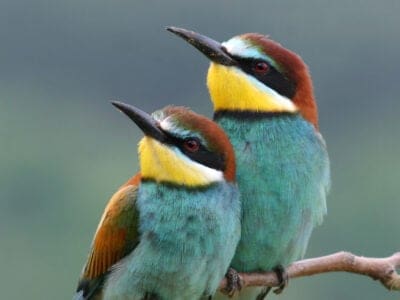
European Bee-Eater
They can eat up to 250 bees per day!
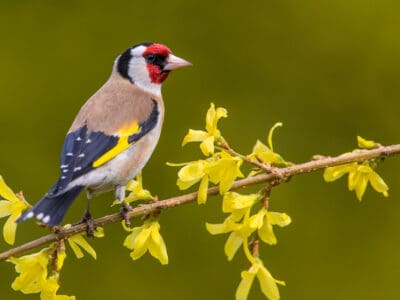
European Goldfinch
They are frequent visitors to backyard feeders, especially those containing niger seeds.

Falcon
The fastest creatures on the planet!

False Widow Spider
False spiders actually prey on black widow spiders and other hazardous spiders
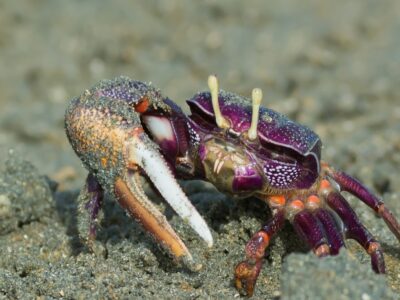
Fiddler Crab
The fiddler crab gets its name from the motion the males make with their over-sized claw during the mating ritual.
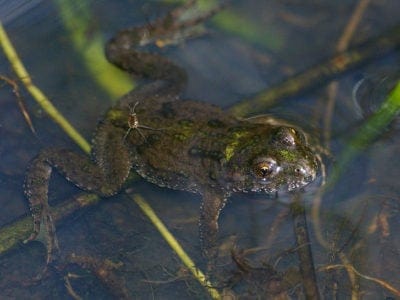
Fire-Bellied Toad
Found across mainland Europe and Asia!
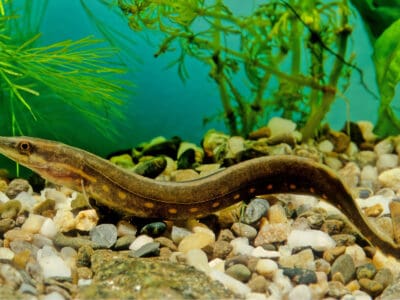
Fire Eel
Fire Eels are not true eels.

Firefly
The firefly produces some of the most efficient light in the world
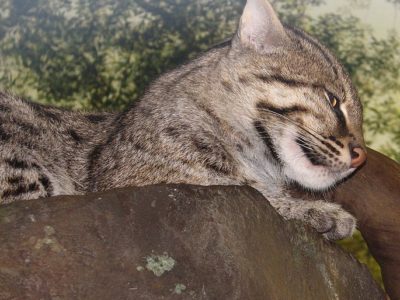
Fishing Cat
Scoops fish out of the water using it's paw!
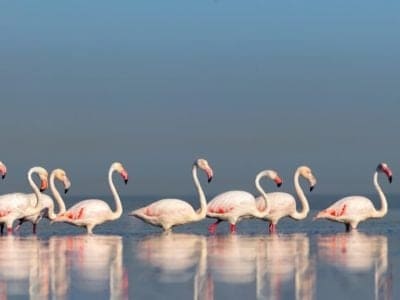
Flamingo
Sleeps on just one leg!

Flea
Adult fleas can jump up to 7 inches in the air

Fly
There are more than 240,000 different species!

Flying Squirrel
Can glide up to 90 meters!

Fox
Only 12 species are considered "true foxes"

Frog
There are around 7,000 different species!
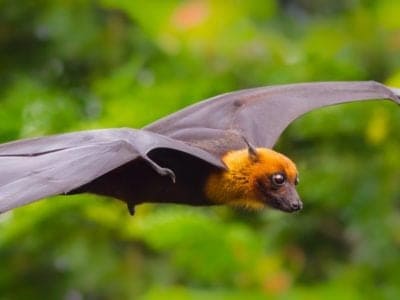
Fruit Bat
Among the largest bats in the world

Fruit Fly
Fruit flies are among the most common research animals in the world
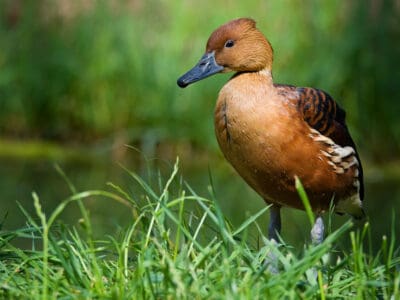
Fulvous Whistling Duck
They build a ramp from their nest, which leads to a nearby water source
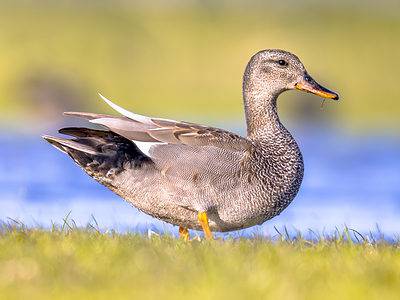
Gadwall
They make many sounds when trying to attract a mate.

Gazelle
Named for the Arabic word for love poems

Gecko
There are thought to be over 2,000 species!

Gerbil
Originally known as the Desert Rat!

German Cockroach
The most common type of urban roach

Giant Trevally
The largest fish in its genus

Glass Lizard
Can grow up to 4ft long!

Glowworm
Found inhabiting dense woodland and caves!

Gnat
Males form large mating swarms at dusk

Goat
Most closely related to the Sheep!

Golden Eagle
Their calls sound like high-pitched screams, but they are quiet most of the time.

Golden Oriole
Migrates between Europe and Asia!

Goose
There are 29 different species!
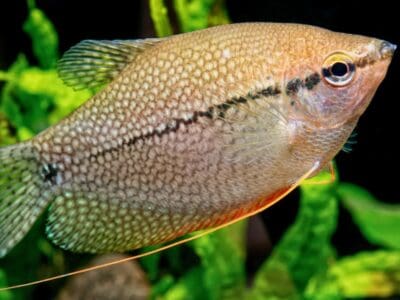
Gourami
Gourami fishes show parental care for their young

Grasshopper
There are 11,000 known species!

Green Bee-Eater
Mainly eats honeybees!
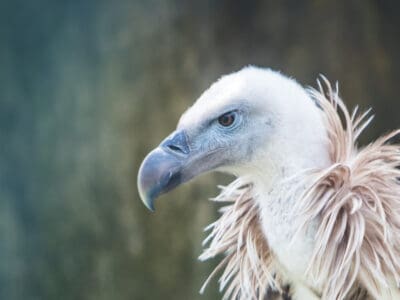
Griffon Vulture
Can spot a dead animal from thousands of feet away

Gypsy Moth
One of the most invasive species in the world

Hamster
Able to run as quickly backwards as forwards!

Hare
Can reach speeds of over 50 mph!

Hawk Moth Caterpillar
Many hawk moth caterpillars eat toxins from plants, but don’t sequester them the way milkweed butterflies do. Most toxins are excreted.

Hedgehog
Thought to be one of the oldest mammals on Earth!

Heron
Inhabits wetlands around the world!
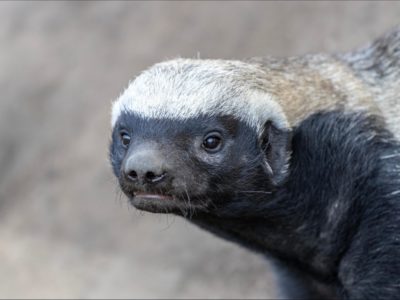
Honey Badger
One of earth's bravest creatures!

Honey Bee
There are only 8 recognized species!

Hoopoe
Stunning bird with a stinky way to deter predators!

Horse
Has evolved over 50 million years!

Horsefly
Horseflies have been seen performing Immelmann turns, much like fighter jets.

Housefly
The fly has no teeth

Human
Thought to have orignated 200,000 years ago!

Huntsman Spider
Some huntsman spiders have an interesting way of moving around. Some cartwheel while others do handsprings or backflips.
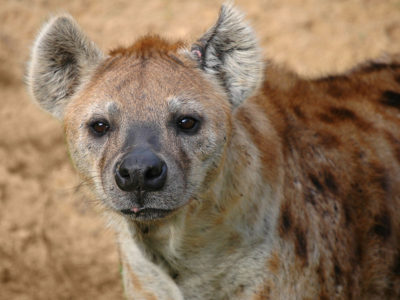
Hyena
There are four different species!
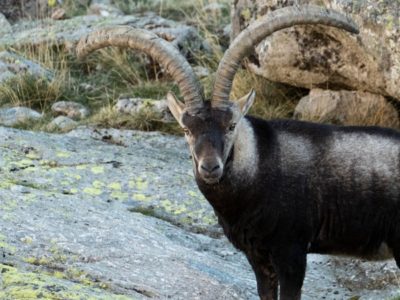
Ibex
Can jump over 6 feet straight up from a standstill

Ibis
Found in swamps, marshes and wetlands!

Indian Cobra
One of the Big Four.

Indian Elephant
Found throughout south-east Asia!
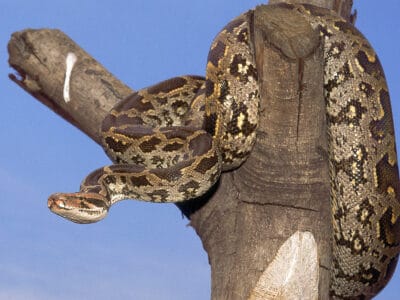
Indian python
Kaa from Rudyard Kipling's The Jungle Book was an Indian Python.

Indian Star Tortoise
Popular in the exotic pet trade!

Insects
There are an estimated 30 million species!

Jacana
The jacana has the ability to swim underwater
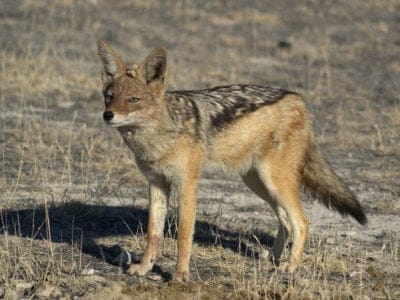
Jackal
Can maintain speeds of 16 km/h!
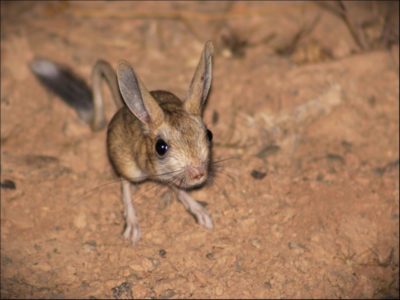
Jerboa
Tiny rodent with a kangaroo-like jump!

Jumping Spider
Some can jump 50 times the length of their bodies

Junglefowl
The term "pecking order" comes from junglefowls' hierarchies among both sexes

Kiang
The kiang, native to the Tibetan Plateau, is the largest of the wild asses!

Kingfisher
Inhabits wetlands and woodlands worldwide!

Krait
A painless bite that can result in death.

Ladybug
There are more than 5,000 species worldwide!

Leech
Has 10 pairs of eyes!
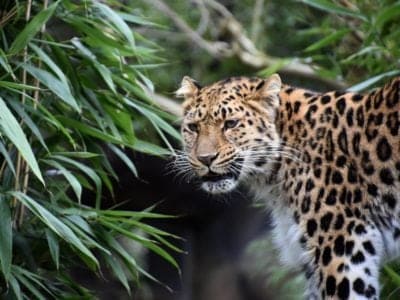
Leopard
Spends much of the time high in the trees!

Leopard Cat
There are 11 different species!

Leopard Gecko
The first ever domesticated lizard! There are now more than 100 unique color morphs thanks to selective breeding.

Liger
The offspring of a lion and tiger parents!

Lizard
There are around 5,000 different species!

Locust
Each locust can eat its weight in plants each day.

Long-Eared Owl
Ear tufts make it look bigger!
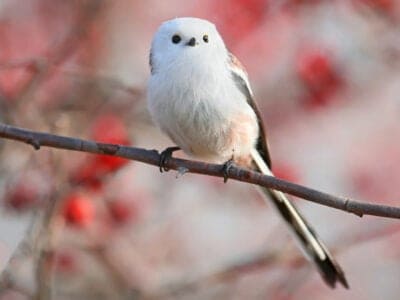
Long-Tailed Tit
Often hangs upside down while feeding!

Macaque
Macaque females will pass on their social rankings to their daughters

Magpie
They are found across Europe, Asia and Africa!
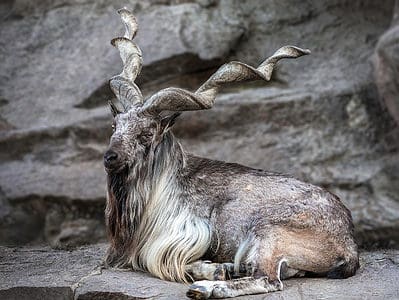
Markhor
The markhor drools a foamy substance after chewing its cud, which the local people use for extracting snake poison.

Masked Palm Civet
Found throughout Asia, India and China!

Mayfly
There are 2,500 known species worldwide!

Mealybug
They have a symbiotic relationship with ants.
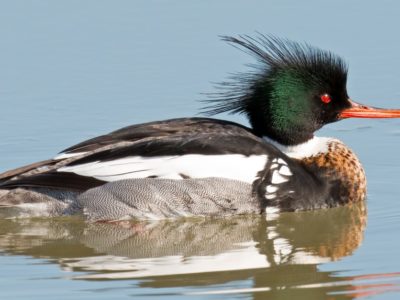
Merganser
They line their nests with their feathers

Millipede
Some species have a poisonous bite!

Mole
Primarily hunts and feeds on Earthworms!

Mole Cricket
Adult Mole crickets may fly as far as 5 miles during mating season and are active most of the year.
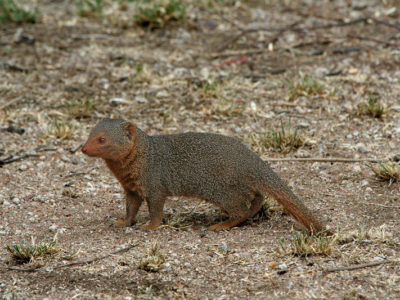
Mongoose
Range in size from just 1 to 3 foot!

Mongrel
Has characteristics of two or more breeds!

Monitor Lizard
Some species are thought to carry a weak venom!

Monkey
There are around 260 known species!

Moorhen
Feeds on aquatic insects and water-spiders!

Mosquito
Only the female mosquito actually sucks blood

Moth
There are 250,000 different species!

Mouse
Found on every continent on Earth!

Mule
The offspring of a horse and donkey parents!
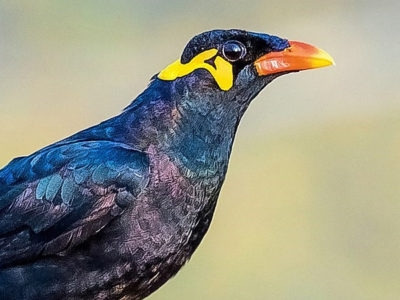
Myna Bird
Many people believe the hill myna bird is better at mimicking humans than a parrot!

Neanderthal
Roamed Asia and Europe for around 100,000 years!

Nematode
Nematodes range in size from 1/10 of an inch to 28 feet long

Newt
Able to regrow lost or damaged limbs!

Nightingale
Named more than 1,000 years ago!

No See Ums
There are more than 5,000 species.

Northern Pintail
Northern pintails migrate at night with speeds reaching 48 miles per hour!

Onager
An onager's coat changes color with the season.

Orb Weaver
Females are about four times the size of males

Osprey
They reuse nesting sites for 70 years!

Otter
There are 13 different species worldwide

Owl
The owl can rotate its head some 270 degrees
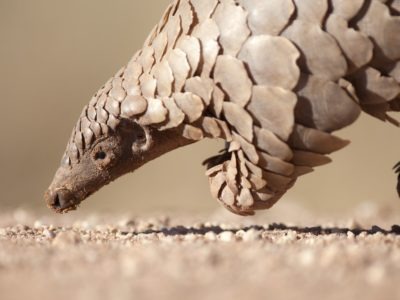
Pangolin
Bad eyesight, but great sense of smell
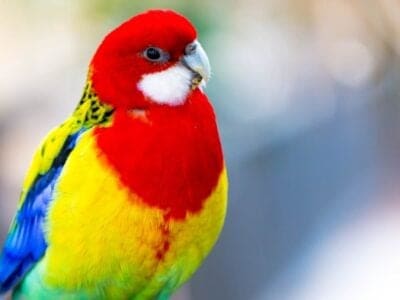
Parakeet
Monk parakeets are the only parakeets that actually build nests. They’re also the only parakeets to nest in great colonies.

Parrot
Can live for up to 100 years!

Peregrine Falcon
Fastest animal on Earth

Pheasant
Females lay between 8 and 12 eggs per clutch!

Pheasant-tailed Jacana
The pheasant-tailed jacana is the only species in its family that migrates long distances.

Pig
Thought to have been domesticated in 9,000 BC!

Pigeon
They can find their way back to their nests from up to 1300 miles away.

Pika
Found in mountainous regions and rocky areas
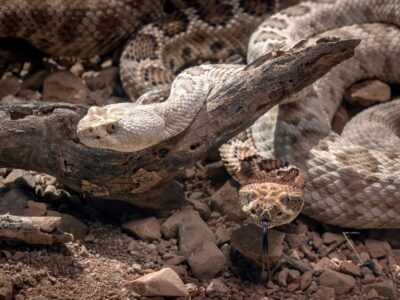
Pit Viper
Pit vipers's fangs fold up into their mouths when they don't need them.

Pompano Fish
They are bottom-feeders

Pond Skater
There are 500 different species!

Porcupine
There are 30 different species worldwide!

Praying Mantis
The mantis can turn its head 180 degrees.

Quail
Inhabits woodland and forest areas worldwide!

Rabbit
There are more than 300 different species!

Rat
Omnivores that eat anything!

Rat Snakes
Rat snakes are constrictors from the Colubridae family of snakes.
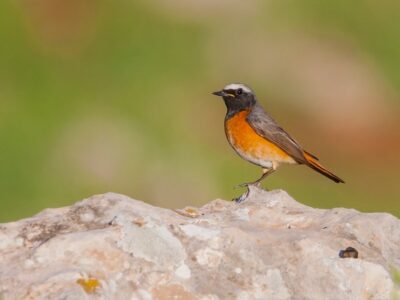
Redstart
They build their nests off the ground in tree holes, cavities, stone walls, and roofs

Rhamphosuchus
Rhamphosuchus had a narrow snout with a beak-like appearance.

Rhesus Macaque
Rhesus Macaques are the most widely distributed primate in terms of geographic diversity

Rhinoceros
It's horns are made from keratin!

River Turtle
Inhabits freshwater habitats around the world!

Robin
There are more than 45 species in Australia alone!

Rodents
The capybara, the world’s largest rodent, likes to be in and around bodies of water. Because of this, the Catholic Church in South America decided that it was a fish, and people were allowed to eat it during Lent and First Fridays.

Rooster
Will mate with the entire flock!

Russel’s Viper
A Russel's viper strike is so forceful it can lift its entire body off the ground.
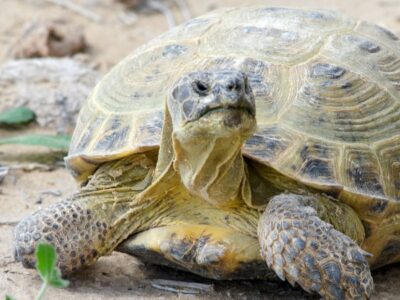
Russian Tortoise
Known by at least five different names

Sable Ferret
Ferrets were used during the Revolutionary War to keep down the rat population.

Salamander
There are more than 700 different species!

Sand Cat
They can survive for weeks without drinking water because the get moisture from their prey.

Sand Crab
The sand crab burrows beneath the sand with its tail
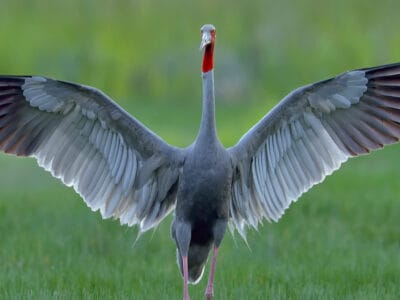
Sarus Crane
Parents use low calls to tell their chicks to freeze and lie still when danger lurks.
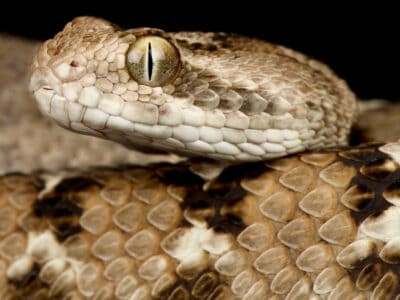
Saw-scaled Viper
This is the smallest venomous snake in India's Big Four.

Scorpion
There are around 2,000 known species!

Sea Eagle
The sea eagle tends to mate for life with a single partner

Seahorse
Males give birth to up to 1,000 offspring!

Sheep
Around 35 million in the English countryside!

Short-Eared Owl
The short-eared owl is one of the most widespread owl species in the world, covering five continents.

Shrew
The spinal column of the shrew Scutisorex somereni is so strong and reinforced that it can support the weight of an adult human.

Shrimp
There are 2,000 different species worldwide!

Siberian Ibex
There’s a population of Siberian ibex in New Mexico

Skink Lizard
Some skinks lay eggs in some habitats while giving birth to skinklets in other habitats.

Slow Worm
Found widely throughout British gardens!

Slug
They glide around on one foot, which is aided by the slime they produce

Smokybrown Cockroach
Has up to 45 eggs per egg case

Snail
There are nearly 1,000 different species!

Snake
There are around 4,000 known species worldwide
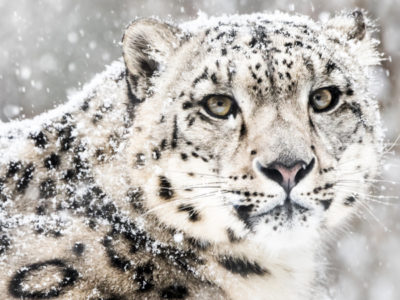
Snow Leopard
Unlike other big cats, snow leopards don’t roar.

Sparrow
There are 140 different species!

Spider Wasp
They prey on spiders to feed their larvae or they parasitize other spider wasps.

Squirrel
Small rodents found in woodlands worldwide!

Stick Insect
There are more than 3,000 different species!

Stoat
Average adults weigh about 200 grams!

Stork
They can’t sing like other birds.
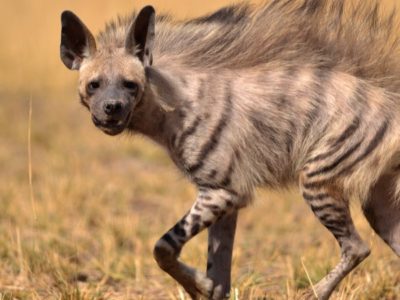
Striped Hyena
The striped hyenas usually mark their territories with the help of the scent gland secretions from their anal pouch.

Swan
Populations have been affected by pollution!

Tangerine Leopard Gecko
Unlike most geckos, tangerine leopard geckos have movable eyelids.

Tarantula Hawk
Tarantula hawks are excellent pollinators, especially for milkweed.
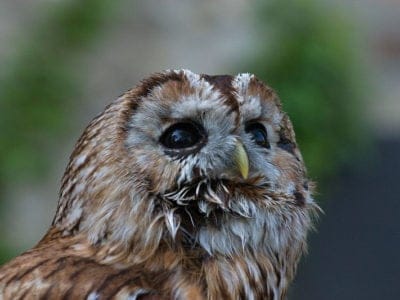
Tawny Owl
The most widespread owl in Europe!

Termite
Their mounds can be up to 9 meters tall!

Thrush
The American robin is called the robin because its red breast reminded European settlers of the robin back in the old country.

Tick
They inject hosts with a chemical that stops them from feeling the pain of the bite
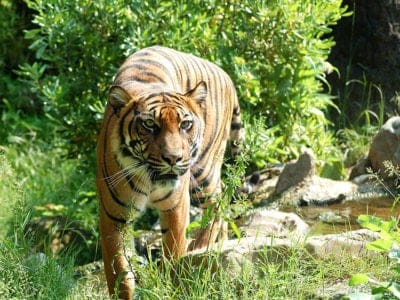
Tiger
The largest feline in the world!

Tiger Beetle
The adult tiger beetle is one of the fastest land insects in the world

Tortoise
Can live until they are more than 150 years old!

Tree Frog
Found in warmer jungles and forests!

Turtles
Some species of aquatic turtles can get up to 70 percent of their oxygen through their butt.
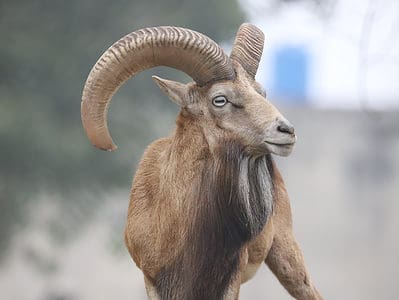
Urial
Urials are the ancestors of modern-day domesticated sheep.

Vinegaroon
Vinegaroons can spray 19 times before the glands are depleted

Viper
Vipers are one of the most widespread groups of snakes and inhabit most

Vulture
There are 30 different species worldwide!
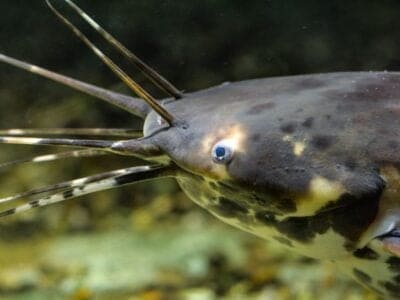
Walking Catfish
The walking catfish can move on land while breathing air

Wasp
There are around 75,000 recognised species!

Water Buffalo
Has been domesticated for thousands of years!
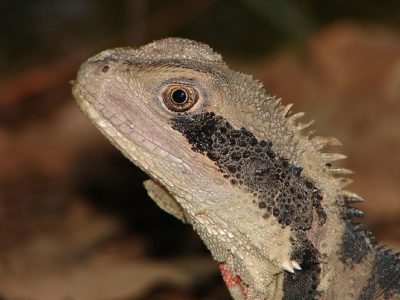
Water Dragon
Spends most of it's time in the trees!

Weasel
The smallest carnivorous mammal in the world!

White Ferret / Albino Ferrets
There are two different types of white ferrets!

White Tiger
None have been seen in the wild for 50 years!
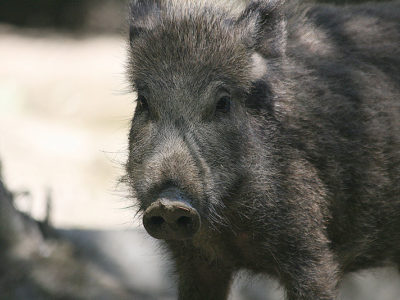
Wild Boar
Males have a top tusk to sharpen the bottom one!

Wolf
Thought to date back more than 300,000 years!

Wolf Spider
Carnivorous arachnid that hunts its prey.

Woodlouse
This animal can roll up into a ball

Woodlouse Spider
Unlike most spiders, woodlouse spiders don’t build a web.

Woodpecker
There are 200 different species!

Worm
Doesn’t have eyes.

Wryneck
They feign death by making their bodies limp and closing their eyes.
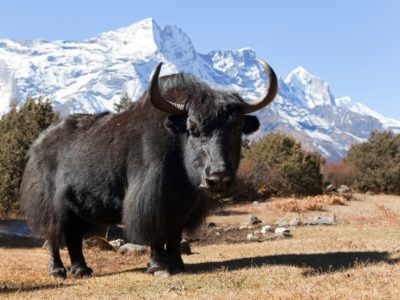
Yak
Yaks can live at altitudes up to 20,000 feet--the highest of any land-dwelling mammal.
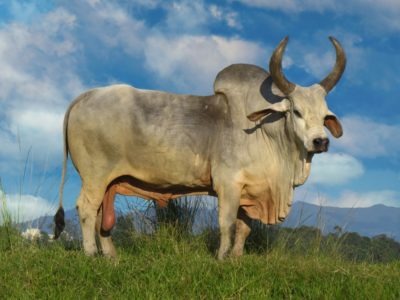
Zebu
There are around 75 different species!
Pakistani Animals List
- Admiral Butterfly
- Angora Goat
- Ant
- Antelope
- Armyworm
- Asiatic Black Bear
- Aurochs
- Avocet
- Banana Spider
- Barb
- Barn Owl
- Barn Swallow
- Basilosaurus
- Bat
- Bear
- Bed Bugs
- Bee
- Beetle
- Beewolf wasp
- Bird
- Biscuit Beetle
- Black Widow Spider
- Brahminy Blindsnake
- Brazilian Treehopper
- Bronze-winged Jacana
- Brown Dog Tick
- Bumblebee
- Butterfly
- Caecilian
- Camel
- Camel Cricket
- Caracal
- Carpenter Ant
- Carpet Viper
- Cashmere Goat
- Cat
- Caterpillar
- Catfish
- Centipede
- Chameleon
- Chicken
- Cicada
- Cinereous Vulture
- Cockroach
- Codling Moth
- Common Buzzard
- Common Furniture Beetle
- Common House Spider
- Common Raven
- Cormorant
- Cosmic Caterpillar
- Cow
- Crab
- Crab Spider
- Crane
- Cricket
- Crocodile
- Crocodylomorph
- Crow
- Cuckoo
- Deer
- Desert Locust
- Dog
- Dog Tick
- Donkey
- Dormouse
- Dragonfly
- Duck
- Dung Beetle
- Dwarf Gourami
- Eagle
- Earthworm
- Earwig
- Eel
- Egyptian Vulture
- Elephant
- Eurasian Eagle-owl
- European Bee-Eater
- European Goldfinch
- Falcon
- False Widow Spider
- Fiddler Crab
- Fire-Bellied Toad
- Fire Eel
- Firefly
- Fishing Cat
- Flamingo
- Flea
- Fly
- Flying Squirrel
- Fox
- Frog
- Fruit Bat
- Fruit Fly
- Fulvous Whistling Duck
- Gadwall
- Gazelle
- Gecko
- Gerbil
- German Cockroach
- Giant Trevally
- Glass Lizard
- Glowworm
- Gnat
- Goat
- Golden Eagle
- Golden Oriole
- Goose
- Gourami
- Grasshopper
- Green Bee-Eater
- Griffon Vulture
- Gypsy Moth
- Hamster
- Hare
- Hawk Moth Caterpillar
- Hedgehog
- Heron
- Honey Badger
- Honey Bee
- Hoopoe
- Horse
- Horsefly
- Housefly
- Human
- Huntsman Spider
- Hyena
- Ibex
- Ibis
- Indian Cobra
- Indian Elephant
- Indian python
- Indian Star Tortoise
- Insects
- Jacana
- Jackal
- Jerboa
- Jumping Spider
- Junglefowl
- Kiang
- Kingfisher
- Krait
- Ladybug
- Leech
- Leopard
- Leopard Cat
- Leopard Gecko
- Liger
- Lizard
- Locust
- Long-Eared Owl
- Long-Tailed Tit
- Macaque
- Magpie
- Markhor
- Masked Palm Civet
- Mayfly
- Mealybug
- Megalochelys
- Merganser
- Millipede
- Mole
- Mole Cricket
- Mongoose
- Mongrel
- Monitor Lizard
- Monkey
- Moorhen
- Mosquito
- Moth
- Mouse
- Mule
- Myna Bird
- Neanderthal
- Nematode
- Newt
- Nightingale
- No See Ums
- Northern Pintail
- Onager
- Orb Weaver
- Osprey
- Otter
- Owl
- Ox
- Pangolin
- Parakeet
- Parrot
- Peregrine Falcon
- Pheasant
- Pheasant-tailed Jacana
- Pig
- Pigeon
- Pika
- Pit Viper
- Pompano Fish
- Pond Skater
- Porcupine
- Praying Mantis
- Quail
- Rabbit
- Rat
- Rat Snakes
- Redstart
- Rhamphosuchus
- Rhesus Macaque
- Rhinoceros
- River Turtle
- Robin
- Rodents
- Rooster
- Russel’s Viper
- Russian Tortoise
- Sable Ferret
- Salamander
- Sand Cat
- Sand Crab
- Sarus Crane
- Saw-scaled Viper
- Scorpion
- Sea Eagle
- Seahorse
- Sheep
- Short-Eared Owl
- Shrew
- Shrimp
- Siberian Ibex
- Skink Lizard
- Slow Worm
- Slug
- Smokybrown Cockroach
- Snail
- Snake
- Snow Leopard
- Sparrow
- Spider Wasp
- Squirrel
- Stick Insect
- Stoat
- Stork
- Striped Hyena
- Swallowtail Butterfly
- Swan
- Tangerine Leopard Gecko
- Tarantula Hawk
- Tawny Owl
- Termite
- Thrush
- Tick
- Tiger
- Tiger Beetle
- Tortoise
- Tree Frog
- Turtles
- Urial
- Vinegaroon
- Viper
- Vulture
- Walking Catfish
- Wasp
- Water Buffalo
- Water Dragon
- Weasel
- White Ferret / Albino Ferrets
- White Tiger
- Wild Boar
- Wolf
- Wolf Spider
- Woodlouse
- Woodlouse Spider
- Woodpecker
- Worm
- Wryneck
- Yak
- Zebu
Animals in Pakistan FAQs (Frequently Asked Questions)
What kind of wild animals are common in Pakistan?
Pakistan is home to more than 150 species of mammals. Foxes, jackals, rodents, bats, wild cats, and domestic goats and cattle are among the most prolific. There are also more than 700 recorded species of birds. Birds of prey and water birds predominate. Lizards, skinks, snakes, frogs, and insects are also very common.
What is the most dangerous animal in Pakistan?
The most dangerous wildlife in Pakistan today are the “big four” snakes: the Indian cobra, Russell’s viper, the Indian saw-scaled viper, and the common krait.
Are there tigers in Pakistan?
The tiger once roamed across Pakistan at some point in the past, but it is now locally extinct.







